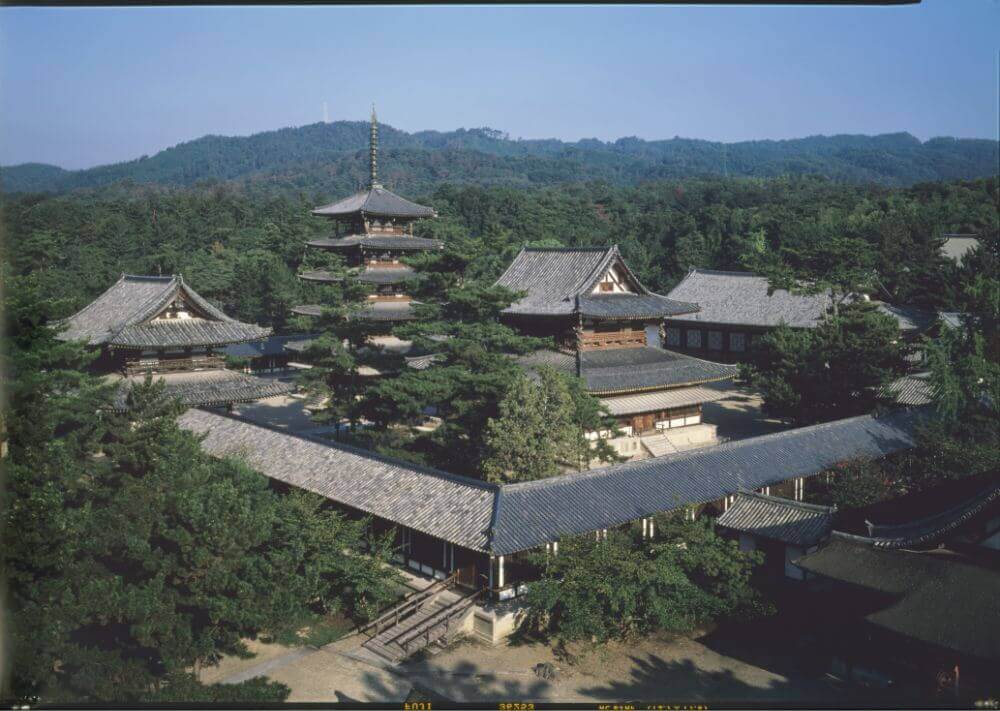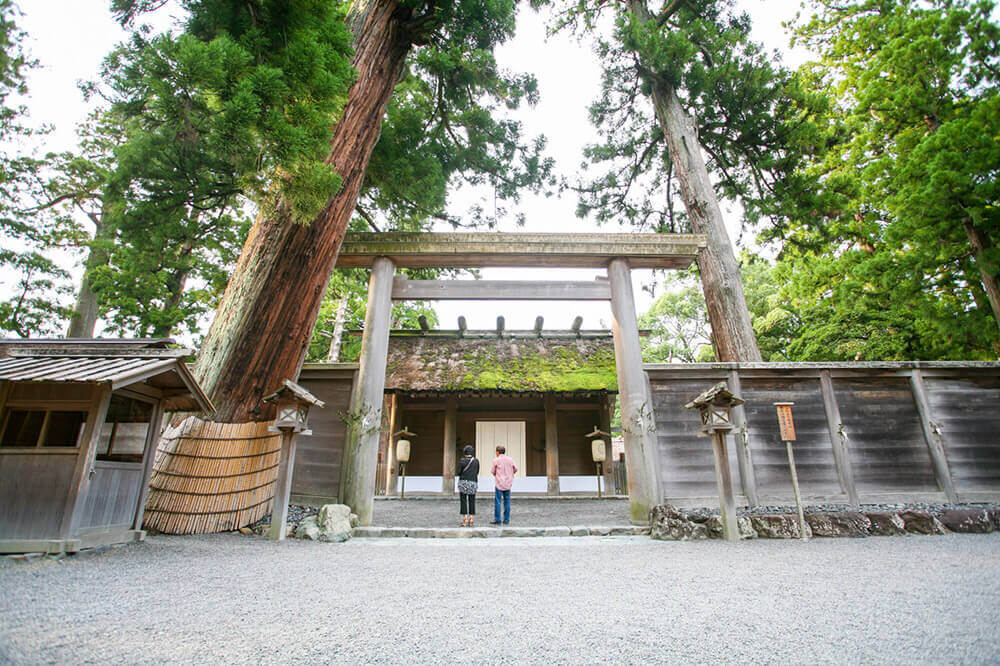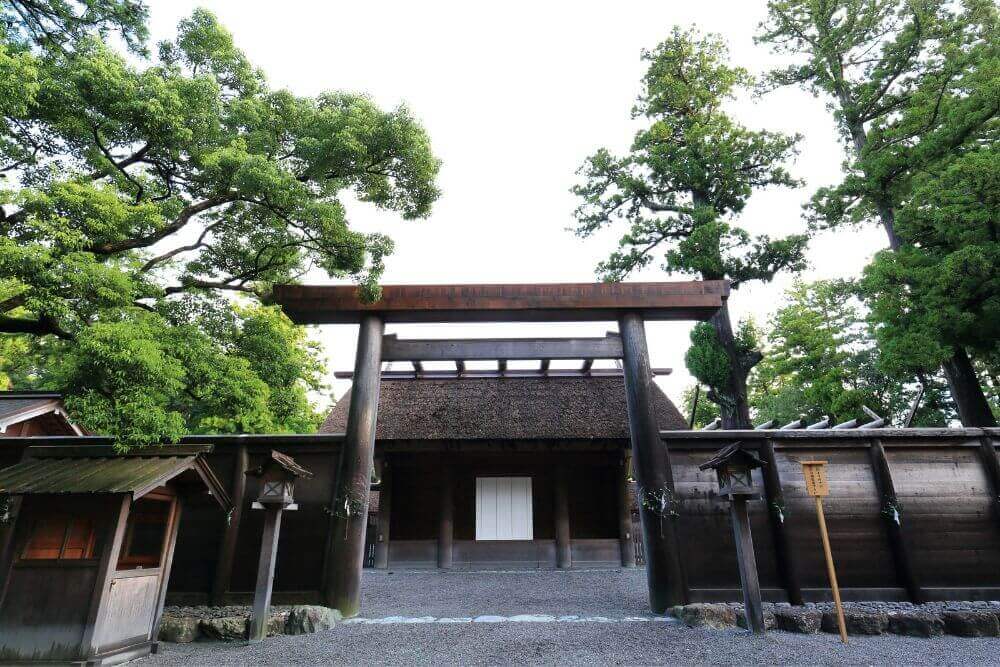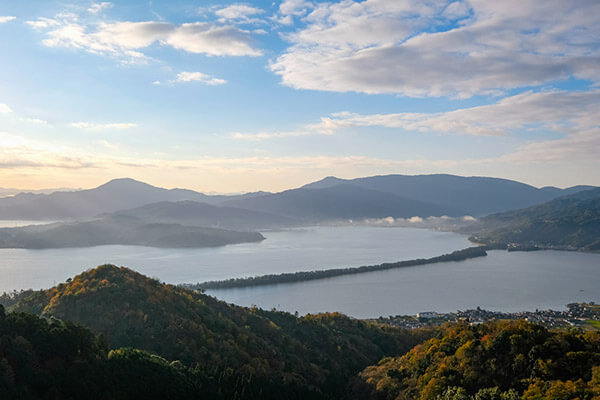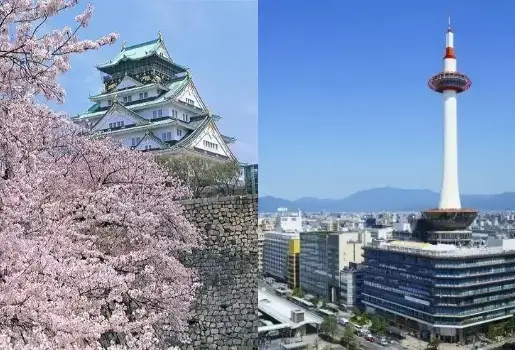ISE & NARA
Ancient paths from mythology
Overview
Since mythological times, this area has been known as the birthplace of Japan. It is the home of Ise Jingu, which sits at the apex of Japan's indigenous Shinto religion. The home of sumo, of sake, of Shugendo (mountain asceticism), of giant Kofun (megalithic tombs). This is where you can sense the starting point of the politics and culture of today's Japan.
This sacred place extends to the Kii Peninsula and encapsulates many sacred mountains. In these forests, populated with cedar trees many hundreds of years old, native "kami" (gods) have been worshipped for more than two millennia. Ise Jingu is one of the most sacred and respected places in Japan. For Japanese people, Ise Jingu is “the home of Japan's heart”.
Nara sits in the center of the Kansai region. It is known worldwide for being home to Japan's oldest Buddhist temples and Shinto shrines. Nara became the center of Japanese politics and religion in the 8th century, meaning it is the site of many of Japan's most famous temples. The best known example, Hōryūji (Hōryū Temple), is a designated National Treasure and is also inscribed on the UNESCO World Heritage List. Of particular note is its five-storied pagoda: this is the world's oldest wooden structure and its beauty is an undoubted must-see.
Recommended Spots
-
Hōryūji (Hōryū Temple)
The grounds of Hōryūji (Hōryū Temple) house the world’s oldest surviving wooden structures, conveying images of Japan as it existed more than 1,300 years ago, during the Asuka Period (A.D. mid 6th – beginning of 8th c.). Hōryūji boasts an illustrious 14 centuries of continuous observance of tradition since established by Prince Shōtoku, the great statesman and founder of Buddhism in Japan. Hōryūji contains approximate 2,500 important cultural and historical structures and articles, including nearly 190 that have been designated as National Treasures or Important Cultural Properties. In December of 1993, Hōryūji, as a unique storehouse of world Buddhist culture, became the first treasure of any kind in Japan to be selected by UNESCO as part of the World Heritage. -
Traditionally thought to be a record of one's relationship the gods and Buddha, a goshuin is a red stamp that proves you visited a certain temple or shrine. At Kichidenji Temple, visitors can make their own goshuin stamp book. You can choose your preferred traditional Japanese paper, and the chief priest will guide you in making the book and attaching the front and back covers. You can also visit the Amitabha Nyorai statue in the main hall, and pray and sound the “mokugyo” — a fish-shaped wooden temple drum.
-
 Shigisan Chogosonshi-ji Temple was established in 587, serving especially as a place of worship for samurai. It sits on the side of 437-meter-high Mt. Shigi and is dedicated to Bishamonten, the god of good fortune. The devotion is still strong among the local people today. Legend has that when Prince Shotoku visited the mountain around 1,400 years ago to pray for battle, Bishamonten appeared before him, teaching him the secrets for victory. As Bishamonten appeared at the hour, day, and year of the tiger, many tiger monuments can be found on the temple grounds.
Shigisan Chogosonshi-ji Temple was established in 587, serving especially as a place of worship for samurai. It sits on the side of 437-meter-high Mt. Shigi and is dedicated to Bishamonten, the god of good fortune. The devotion is still strong among the local people today. Legend has that when Prince Shotoku visited the mountain around 1,400 years ago to pray for battle, Bishamonten appeared before him, teaching him the secrets for victory. As Bishamonten appeared at the hour, day, and year of the tiger, many tiger monuments can be found on the temple grounds. -
 Gyokuzoin is a temple of prayer located on Mt. Shigi. Contained within its grounds is a temple lodging called a shukubo. A prayer ritual that visitors can attend takes place every day in the early morning. Training experiences are also available as part of both day trips and overnight stays, and visitors can participate in healing, prayer, and spiritual cultivation. Sessions follow a schedule and cover meditation as well as sutra chanting and transcription.
Gyokuzoin is a temple of prayer located on Mt. Shigi. Contained within its grounds is a temple lodging called a shukubo. A prayer ritual that visitors can attend takes place every day in the early morning. Training experiences are also available as part of both day trips and overnight stays, and visitors can participate in healing, prayer, and spiritual cultivation. Sessions follow a schedule and cover meditation as well as sutra chanting and transcription. -
 Kashiharajingu Shrine is said to be located where Japan’s first emperor, Jimmu, founded the country and ascended the throne. Let your mind be at ease as you walk around the extensive shrine grounds surrounded by nature. Mt. Unebi, where the shrine is situated, is also designated as a National Place of Scenic Beauty and known as one of the “Three Mountains of Yamato.” From the temple, visitors can access the path up the mountain. It takes around 30 minutes to reach the summit, which has an altitude of 199.2 m.
Kashiharajingu Shrine is said to be located where Japan’s first emperor, Jimmu, founded the country and ascended the throne. Let your mind be at ease as you walk around the extensive shrine grounds surrounded by nature. Mt. Unebi, where the shrine is situated, is also designated as a National Place of Scenic Beauty and known as one of the “Three Mountains of Yamato.” From the temple, visitors can access the path up the mountain. It takes around 30 minutes to reach the summit, which has an altitude of 199.2 m. -
Enjoy some time cycling around Asuka, which is said to be the ancient capital of Japan. Ancient tombs, ruins, temples, and shrines are scattered throughout the town, supporting the belief that it was a major city in the 7th century that played a role in the creation of Japan’s unique culture. Take a bicycle and feel the wind as you experience this unique, spiritual homeland of Japan.
-
 Located at an altitude of 300 m, the World Heritage-listed Kinpusenji Temple is the head temple of Shugendo (mountain asceticism). Surrounded by mountains, it has a dignified atmosphere and still represents a place of spiritual training. With the sound of prayers and the smell of incense, you can truly sense the ancient devotion that continues to this day.Audio Guide
Located at an altitude of 300 m, the World Heritage-listed Kinpusenji Temple is the head temple of Shugendo (mountain asceticism). Surrounded by mountains, it has a dignified atmosphere and still represents a place of spiritual training. With the sound of prayers and the smell of incense, you can truly sense the ancient devotion that continues to this day.Audio Guide -
 Yoshimizu Shrine is one of the constitute elements of a world heritage site, has the oldest shoin, or drawing room, for a residence in Japanese history. Designated as an Important Cultural Property of Japan, the shoin was used throughout history by Japan’s samurai and even an emperor. Open to the public, visitors can view its precious architecture and furnishings. Mt. Yoshino, which can be seen from the grounds of the shrine, is covered with some 30,000 cherry blossoms of 200 different varieties. Cherry blossoms are protected as sacred trees by the practitioners of Shugendo and have been planted here for hundreds of years. Enjoy the stunning view.
Yoshimizu Shrine is one of the constitute elements of a world heritage site, has the oldest shoin, or drawing room, for a residence in Japanese history. Designated as an Important Cultural Property of Japan, the shoin was used throughout history by Japan’s samurai and even an emperor. Open to the public, visitors can view its precious architecture and furnishings. Mt. Yoshino, which can be seen from the grounds of the shrine, is covered with some 30,000 cherry blossoms of 200 different varieties. Cherry blossoms are protected as sacred trees by the practitioners of Shugendo and have been planted here for hundreds of years. Enjoy the stunning view. -
Ise Jingu has a history of some two thousand years. It comprises Kotai Jingu, also known as Naiku (the inner shrine), which sits on the bank of the Isuzu River, Toyo’ukedaijingu, also known as Geku (the outer shrine), and some 125 other shrines of various sizes besides. Kotai Jingu is dedicated to Amaterasu-Omikami, and is held beloved in the hearts of Japanese nationwide. The grounds of the temple are home to vast swathes of untouched woodland. The approach to the temple, lined with ancient, giant trees, has an unmistakably sacred atmosphere.
-
 The town of Okage Yokocho is home to over 50 traditional stores. Since ancient times, the local people have provided warm hospitality to the visitors of Ise Shrine, and continue to do so today. As you explore its main street lined with traditional buildings, you will encounter specialty products, local cuisine, and even taiko drum performances. Enjoy a leisurely stroll and immerse yourself in the town’s special atmosphere.
The town of Okage Yokocho is home to over 50 traditional stores. Since ancient times, the local people have provided warm hospitality to the visitors of Ise Shrine, and continue to do so today. As you explore its main street lined with traditional buildings, you will encounter specialty products, local cuisine, and even taiko drum performances. Enjoy a leisurely stroll and immerse yourself in the town’s special atmosphere. -
The sea around Shima is one of the largest pearl producing areas. At Mikimoto Pearl Island, you can learn many things about pearls and also purchase beautiful pearl items from the store. It also offers an invaluable chance to watch a diving demonstration by “Ama” (traditional female skin divers), who once played a vital role in the cultivation of pearls. Enjoy watching them collect oysters from the seafloor in their traditional white diving costume.
-
A seafood barbecue is provided by Ama divers who catch fish and shellfish by skin diving. You can listen to their stories as they cook fresh seafood on hot coals, such as Ise Lobster, abalone, and turban shell. Enjoy not only the delicious meal, but also lively conversation with the Ama divers. Bookings are required.
-
 Mirador Shima is an observation deck that provides a panoramic view of Ago Bay, which is situated in a peninsula dotted with roughly sixty islands. A popular spot for photos, visitors can enjoy the spectacular sight of the ria coast from an elevation of 140 meters. The site has well-maintained promenades making it ideal for walks, and you can also relax and take in the view while enjoying yourself at its cafe.
Mirador Shima is an observation deck that provides a panoramic view of Ago Bay, which is situated in a peninsula dotted with roughly sixty islands. A popular spot for photos, visitors can enjoy the spectacular sight of the ria coast from an elevation of 140 meters. The site has well-maintained promenades making it ideal for walks, and you can also relax and take in the view while enjoying yourself at its cafe. -
 At Shinju no Sato you can harvest pearls yourself and make accessories. You begin by choosing an Ayoka pearl oyster. After harvesting the pearl from the oyster, you polish it and set the pearl in the accessory of your choice. As the pearls are produced naturally inside the oysters, they form various unique shapes. Enjoy creating your very own souvenir.
At Shinju no Sato you can harvest pearls yourself and make accessories. You begin by choosing an Ayoka pearl oyster. After harvesting the pearl from the oyster, you polish it and set the pearl in the accessory of your choice. As the pearls are produced naturally inside the oysters, they form various unique shapes. Enjoy creating your very own souvenir. -
 Katsuobushi, or dried bonito flakes, are an indispensable ingredient for Japanese dashi (soup broth) and are a preserved food made by drying boiled bonito. At Katsuo no Tenpaku, you watch a demonstration of the traditional hand-made production method, and also enjoy trying katsuobushi-garnished rice cooked in an earthenware pot.
Katsuobushi, or dried bonito flakes, are an indispensable ingredient for Japanese dashi (soup broth) and are a preserved food made by drying boiled bonito. At Katsuo no Tenpaku, you watch a demonstration of the traditional hand-made production method, and also enjoy trying katsuobushi-garnished rice cooked in an earthenware pot.

